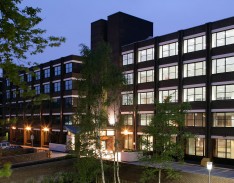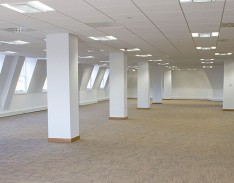How to eradicate bad memories of buildings
Thursday, 21 September 2006
With an ongoing shortage of Grade A office accommodation in central Birmingham, demand for quality refurbishments continues to rise. Carried out properly, these premises can match and exceed their new build counterparts but expert planning and management is essential to ensure older means wiser.
Buildings, it seems, have memories. Not in a paranormal way, rather it is people who have long memories about buildings.
So when a prospective new tenant is weighing up their options for new office accommodation, certain addresses will be given short shrift, simply because of what they used to be like ten or 15 years ago. As in so many walks of life, a bad reputation is easy to acquire yet fiendishly difficult to lose.
Director Steven Jelfs explained: “Many potential clients are receptive to the concept of refurbishments yet need some convincing, especially when they only remember a particular building as a stuffy, outdated office they visited many years ago.
“Even before a client commits to a property, we can be called to visit the site on their behalf in order to appraise the opportunities of the property and to provide a vision of the finished product.”
The changes required to upgrade a typical ‘tired’ office for modern needs are so profound that they will affect virtually every aspect of the building, both visible and behind the scenes. Yet if properly managed and executed, the outcome is a unique workplace, blending the comforts and convenience of the new with the style of the old: a workplace which impresses and performs.
A suitably qualified project manager will take you through each and every stage of development from structural appraisal of the existing building to the end users’ technological requirements.
“If you are new to refurbishment, the scope of work required can be quite daunting and that is before you consider some of the more fundamental structural issues. Apart from the more obvious repair issues, there are often structural reconfigurations required to achieve modern spacial arrangements for occupiers. These are all issues we deal with on a regular basis.”
Aside from our expertise in negotiating the complexities of refurbishment, a key reason why project management specialists are in such demand is the continuing shortfall in suitable new-build offices at the top end of the spectrum.
“There is plenty of demand for the best accommodation but simply not enough new product,” explained Steven.
“A number of quality refurbishment schemes are in the pipeline and will make a significant impact. In the meantime, some occupiers have been delaying their decision and taking their time to commit.”
We have been involved in a number of major refurbishment projects. Among them is Cavendish House, Waterloo Street – a highly distinguished office building in the heart of the city’s conservation zone; Maple House on Corporation Street; and 33 Bennetts Hill, a former banking hall and outstanding listed building.
All have undergone comprehensive transformation to provide first-class 21st century accommodation. The question remains: will there be major new occupiers taking these, such as decentralised Government departments, or will it be a case of ‘musical chairs’ with existing companies swapping and upgrading?
Agents and developers are all anxious to see how the market pans out, yet they still believe the opportunities for quality refurbishment is set to remain buoyant either way.
Steven said: “It is inconceivable that sufficient new top grade office space will be available to meet all demand. It just cannot be done within the core areas of the city centre. Whether we see a marked net influx of organisations or just a merry-go-round of existing occupiers, the demand for quality refurbishment is bound to remain high.
“Rather than bemoan this, occupiers should shake off any preconceptions and bad memories they might still have about older properties and realise that many gems exist in this city – and there are many specialists who can make them shine again.”







